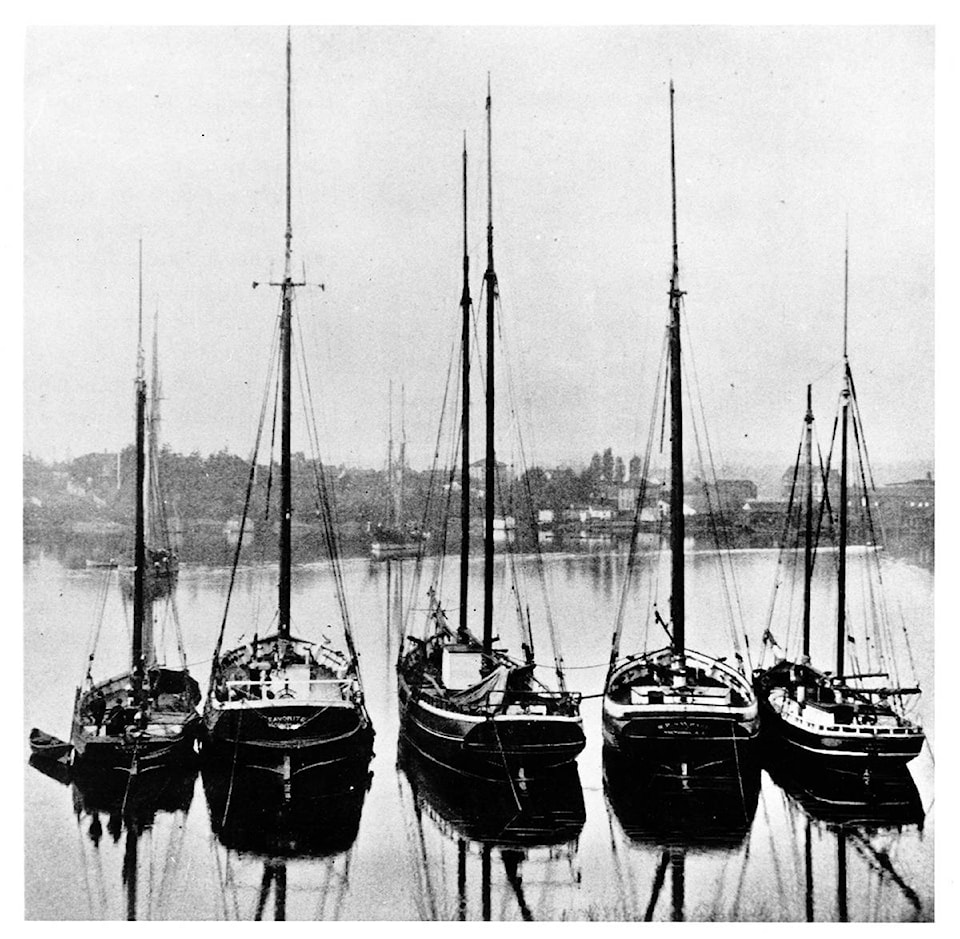Elida Peers | Contributed
In 1890 the five schooners pictured here were moored at Ship’s Point in Victoria, awaiting the beginning of the sealing season.
The harbours at Victoria, Sooke and Port Renfrew (San Juan) were among the demarcation points for the sealing vessels that set out each season for the Pacific Ocean, Bering Sea, and Sea of Japan.
Second from left is the Favorite, built at Sooke, in 1868. The other schooners pictured are Wanderer, Penelope, W.P. Sayward and Venture.
The 125-ton Favorite was built of Douglas-fir on the property of a settler called Keil, near the shoreline of East Sooke, at a spot just west of Woodward Point.
Favorite was built as a freighting schooner for Capt. Spring, and the diary of Michael Muir tells us that she was launched in April 1868. She then went to the Hudson’s Bay Company wharf in Victoria to be fitted out. Her maiden voyage was to the Sandwich Islands (Hawaii) carrying freight.
This was the era when the pelagic seal hunt was all the rage, and this vessel soon joined in the hunt.
First Nations hunters were recruited in our coastal villages, and their canoes were stacked on the decks of the schooners. Dozens of men from both the immigrant and First Nations communities took part in this industry, which saw the pelagic seal hunt as one of the largest sources of revenue on the northwest Pacific coast.
The journeys out into the oceans were extremely hazardous, and while riches were earned by some of the crews that returned loaded with pelts, there were other vessels that did not return at all, and wives and families along the coast were left to grieve. Names that come to mind of sealers who were lost include the names Sheilds, George, and Charters.
A well-known sealer was Joseph Poirier, Jr., son of the man for whom Ecole Poirier is named. Names of some roads in Otter Point – Robinson and Davidson – originated with the names of sealers who had come into port with Joseph Poirier, were introduced to his sisters, and became part of the history of our community.
Pelagic seal hunting was halted by the North Pacific Sealing Convention in 1911.
•••
Elida Peers is the historian of the Sooke Region Museum.
